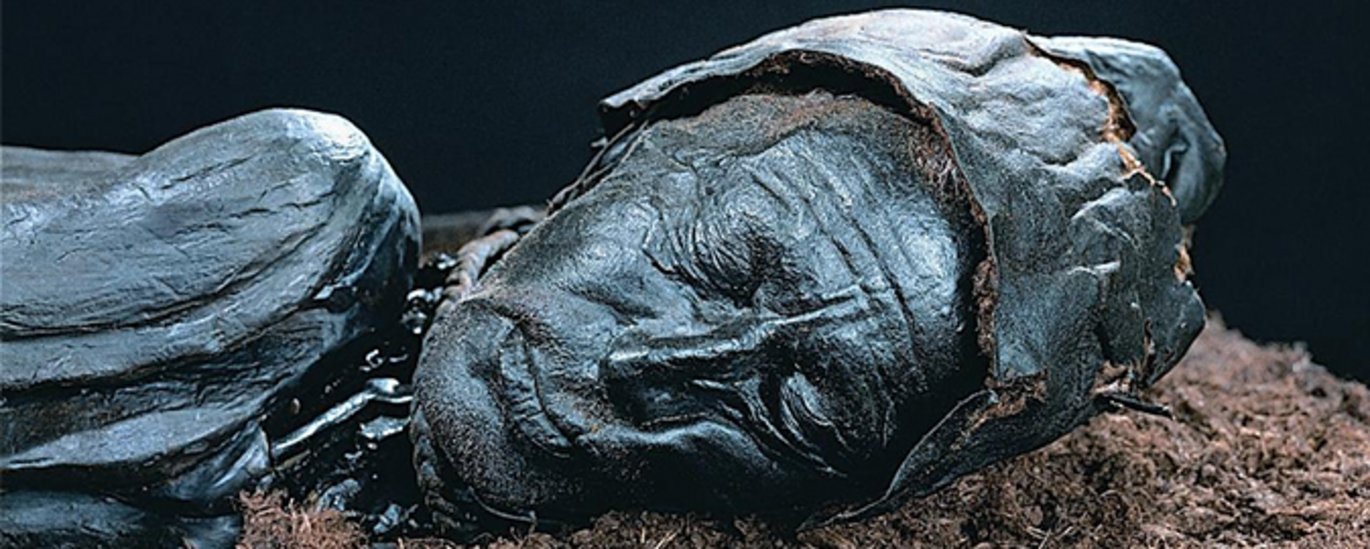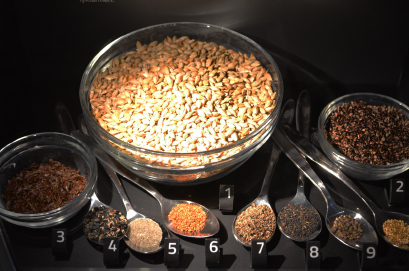Research reveals recipe of Tollund man's last meal
Researchers have re-examined the last meal of the famous Tollund Man bog body, consumed shortly before he died around 400 BC. The analysis reveals that he likely ate an ordinary Iron Age meal of porridge and fish, consumed 12-24 hours before his death.


New analyzes of the Tollund Man bog body's last meal - where Jan Enghild and Carsten Scavenius from the Department of Molecular Biology and Genetics at Aarhus University, have contributed with protein analyzes - reveal that the Tollund Man bog body's last meal also contained fish and not just porridge.
Archaeologists have been able to reconstruct the last meal of Tollund Man in greater detail than ever before. He appears to have been a human sacrifice deposited in a Danish bog 2,400- years-ago. But despite this extraordinary treatment, his last meal was relatively ordinary.
Tollund Man’s gut contents had been analysed forensically when he was discovered in 1950, uncovering traces of cereals and wild plants that were likely eaten 12-24 hours before death.
“Since knowledge of plant macrofossils and the methods for analysing gut contents have improved greatly since 1950, we decided to re-investigate the gut contents of Tollund Man,” said Dr Nina H. Nielsen from the Museum Silkeborg, lead author of the new study.
As such, Dr Nielsen and a team from several other Danish institutions worked together to re-analyse samples from Tollund Man’s gut. Their research, published in the journal Antiquity, allowed them to reconstruct this Iron Age meal – right down to how it was prepared.
“We can now pretty much reconstruct the recipe of the last meal of Tollund Man. The meal was quite nutritious and consisted of a barley porridge with some seeds from pale persicaria and flax,” said Dr Nielsen.
They also discovered that the meal included fish and the porridge was cooked in a clay pot, likely using water from a lake or bog, all providing an incredible snapshot of Iron Age life.
“In this way, we get very close to a specific situation in the past – you can almost imagine how they were sitting by the fireplace preparing the barley porridge and the fish,” said Dr Nielsen.
Whilst this level of detail is extraordinary, it seems Tollund Man’s last meal was not – porridge was likely a typical dish in Iron Age northern Europe. Fish is also known to have been eaten in this period, although it did not make up a substantial part of the diet.
However, the meal also included seeds from pale persicaria, which are typically removed as grain is cleaned during threshing. In this case, the resulting threshing waste with these seeds, sand, and other detritus, seems to have been used as an actual ingredient in the porridge.
Altogether, it was a nutritious meal that would have provided half the calories for the day.
“As for now, we don’t know whether the use of treshing waste in the Iron Age cuisine was normal practice or whether this ingredient was only used at special occations like human sacrifices,” said Dr Nielsen.
This research also identified that Tollund Man was suffering from several parasites at the time of his death, including whipworm, tapeworm and mawworm.
These provide clues about what health and sanitation were like in the Iron Age, as these were likely caused by the consumption of undercooked meat and contaminated food or water.
The researchers hope the techniques refined here can be used to re-examine other bog bodies, shedding more light on diet, ritual, and health in the past.
The new study
Since knowledge of plant macrofossils and the methods for analysing gut contents have improved since 1950, a team of researchers decided to re-investigate the gut contents of Tollund Man in 2019-2020.
The main aim of the new study was to quantify the ingredients of his last meal and thereby gain a more detailed insight into what an Iron Age meal could look like.The researchers also wanted to search for unusual ingredients that perhaps could be related to rituals in the sacrifice and explore whether the presence of weed seeds in the meal could be a sign of a food shortage. Additionally, they wanted to look for evidence of intestinal parasites that could provide insights into health and sanitation in the Iron Age.
A few millilitres of material from the large intestine were taken for analyses of macrofossils, pollen, Non-Pollen Palynomorphs (microscopic plant fragments, spores, parasite eggs, etc.), proteins and fat. This is the most detailed study that has been conducted on the gut contents of a bog body and was so detailed that researchers could recreate the recipe of the last meal.
The last meal
The study concluded that Tollund Man had eaten a barley porridge to which some seeds of pale persicaria and flax were added. In total 335g barley grains were used, 29g seeds of pale persicaria and 16g flax seeds. Fish probably were also part of the meal as indicated by the protein analysis. Traces of a further 20 plant species were also found in the guts, but they made up less than 1% and were probably not an intentional part of the meal.
Barley and flax were cultivated in the Iron Age. However, Pale persicaria grew as a weed in the fields and was harvested together with the grain. When cleaning the grain through threshing and sieving, the small seeds from weed species were left on the ground. Afterwards, the seeds must have been gathered and used in cooking. This also fits with the presence of sand and charcoal, which probably were accidentally swept up from the ground.
“It is remarkable that evidence of threshing waste is now found in both Tollund Man and Grauballe Man – the two bog bodies whose gut contents have undergone the most detailed analyses. It is definitely something that also should be looked for in future investigations,” said Dr Nielsen.
The use of threshing waste containing pale persicaria in the porridge could be connected to the human sacrifice ritual, or it might have been part of ordinary Iron Age cooking. Pale persicaria is rich in nutrients – althogether the plant ingredients alone provided nearly half of the daily caloric intake for a person with limited physical activity. As such, there is no sign of a severe food shortage that could explain why Tollund Man was sacrificed. This mystery remains unsolved.
Link to the research article in Antiquity:
The last meal of Tollund Man: new analyses of his gut content
Nina H. Nielsen, Peter Steen Henriksen, Morten Fischer Mortensen, Renée Enevold, Martin N. Mortensen, Carsten Scavenius & Jan J. Enghild
ABOUT THE RESEARCH
The research team included specialists from Museum Silkeborg, the Department of Archaeological Science at Moesgaard Museum, the Department of Environmental Archaeology at the National Museum of Denmark, and the Department of Molecular Biology and Genetics, Aarhus University. The study was supported by the Research Fund of the Danish Ministry of Culture and the Novo Nordic Foundation.
FOR FURTHER INFORMATION, PLEASE CONTACT:
Nina Helt Nielsen, Museum Silkeborg
Mobile: +45 2154 0145. E-mail: nhn@museumsilkeborg.dk
Peter Steen Henriksen, The National Museum of Denmark
Mobile: +45 4120 6179. E-mail: peter.steen.henriksen@natmus.dk
Carsten Scavenius, Department of Molecular Biology and Genetics, Aarhus University
Mobile: +45 7220 1010. E-mail: csss@mbg.au.dk
Martin N. Mortensen, National Museum of Denmark
Mobile: +45 41206486. E-mail: martin.n.mortensen@natmus.dk
Renée Enevold, Moesgaard Museum
Mobile: +45 2170 3463. E-mail: re@moesgaardmuseum.dk
